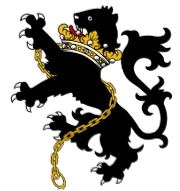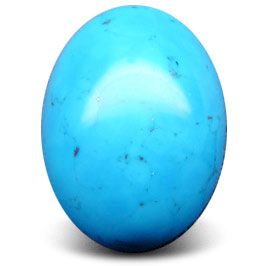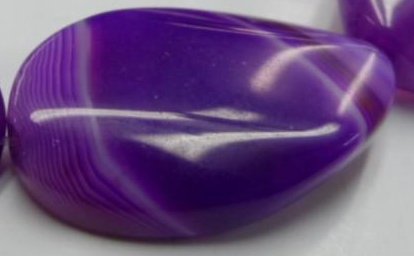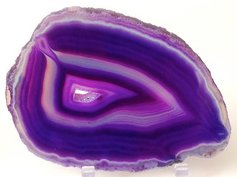- Home Page
- Books
- Articles
- The Tribes
- Presentations
- Bonus Material
Ancient History Reconsidered


The Tribe of Naphtali:
Naphtali was the sixth of Jacob’s sons and was the youngest of two sons born to him by his concubine Bilhah. Naphtali had four sons: יַחְצְאֵל Yachtsiel (AV Jahzeel), גוּנִי Guni, יֵצֶר Yetser (AV Jezer) and שִׁלֵּם Shillem (Gen. 46:24), the latter also being called שַׁלּוּם Shallum (1 Chron. 7:13).
One of the interesting things about Naphtali is the lack of information in the Tanakh (Hebrew Bible) concerning what happened to this tribe. Whilst the Book of Chronicles provides some detailed information as to where many of the tribes had gone, when it comes to the tribe of Naphtali, the only information it provides (1 Chron. 7:13) is that Naphtali had four sons and proceeds to restate the information contained in Gen. 46:24. This means that Judah had no idea where they had disappeared to, nor indeed who they had become.
Hiram King of Tyre:
We are told that Hiram king of Tyre was...
“a widow’s son of the tribe of Naphtali...” (1 Kings 7:14.)
In addition, Hiram was...
“the son of a woman of the daughters of Dan...” (2 Chron. 2:14.)
Dan and Naphtali were two different tribes.
“and his father was a man of Tyre, skilful to work in gold, and in silver, in brass, in iron, in stone, and in timber, in purple, in blue, and in fine linen, and in crimson; also to grave any manner of graving, and to find out every device which shall be put to him...” (1 Kings 7:14 & 2 Chron. 2:14.)
Josephus, who wrongly tells us that his mother was of the tribe of Naphtali, adds the following important piece of information:
“Now Solomon sent for an artificer out of Tyre, whose name was Hiram; he was by birth of the tribe of Naphtali, on the mother’s side, (for she was of that tribe,) but his father was Ur, of the stock of the Israelites.”1
Notice that his father was an Israelite! This is also confirmed by the Septuagint which states:
“And king Solomon sent, and took Chiram out of Tyre, the son of a widow woman; and he was of the tribe of Nephtalim [καὶ οὖτος απὸ τῆς φυλῆς τῆς Νεφθαλίμ], and his father was a Tyrian; a worker in brass, and accomplished in art and skill and knowledge to work every work in brass : and he was brought in to king Solomon, and he wrought all the works.”2
In The Forgotten Tribe of Naphtali & the Phoenicians, we look at the important role the tribe of Naphtali played in the establishment of colonies overseas. We soon discover that Hiram king of Tyre, who is usually wrongly portrayed as a Canaanite, belonged to the tribe of Yetser, the third-born son of Naphtali.
Naphtali’s Stone

|

|

|
Turquoise. |
Purple agate. |
|
Each of the twelve stones on the priestly breastplate known as the choshen, which was worn by the High Priest, represented one of the twelve tribes. The stone which represented the tribe of Naphtali is the eighth one called שְׁבוֹ sh'vo. It is widely accepted that this stone was the agate, (Exod. 28:19 & 39:12) and whilst this particular stone comes in many colours, the Jewish Encyclopedia informs us that the stone in question was either turquoise or sky blue.3
Ginzberg was also under the impression that the stone was a turquoise colour:
“The turquoise was Naphtali’s stone, for it gives its owner speed in riding, and Naphtali was ‘a hind let loose’”.4
This comment makes no sense whatsoever. As to how either a stone or a colour can have any bearing on the speed of a horse defies logic. Seeing that purple was highly esteemed by the Tyrians, and as we have identified the Tyrians as belonging primarily to the tribe of Naphtali, then we must assume that Naphtali’s stone was more correctly purple.
“Tyre is wholly an island, built nearly in the same manner as Aradus... ...It sustained great injury when it was taken by siege by Alexander [the Great], but it rose above these misfortunes, and recovered itself both by the skill of the people in the art of navigation, in which the Phoenicians in general have always excelled all nations, and by (the export of) purple-dyed manufactures, the Tyrian purple being in the highest estimation. The shellfish from which it is procured is caught near the coast, and the Tyrians have in great abundance other requisites for dyeing.”5
In the Book of Revelation (the final book in what is known as The New Testament), the eighth stone is called beryl (Rev. 21:20), though the order of the stones after the fourth appear to be out of sequence. Knowing that the Tyrians were ruled over by the tribe of Naphtali, it makes sense if their stone was a purple colour. According to the Jewish Encyclopedia, Naphtali’s flag was ‘wine-coloured’,6 this being a dark red colour with a purple tinge. The evidence therefore suggests that the stone was somewhere between the two colours; purple and red. In fact, this same confusion is exhibited in the Greek where the word φοινῑκόεις phoenikeois, which is clearly derived from the word Phoenicia, likewise means ‘dark-red, purple or crimson’.7 The word φοι̑νιξ phoenix likewise means, “a purple-red, purple or crimson, because the discovery and earliest use of this colour was ascribed to the Phoenicians”.8 When we realise who Naphtali are today, this information accords perfectly well with the colour being used by the four tribes of Naphtali. (For more information, read The Forgotten Tribe of Naphtali & the Phoenicians.)
| 1. | Josephus, Antiquities of the Jews viii.iii.4. [Return] |
| 2. | Septuagint 3 Kings 7:2. [Return] |
| 3. | Jewish Encyclopedia, Entry under Gems. [Return] |
| 4. | Legends of the Jews Vol. 3 (From the Exodus to the Death of Moses) p.171 – The Stones in the Breastplate, Rabbi Louis Ginzberg, Philadelphia 1911. [Return] |
| 5. | Strabo, Geography xvi.ii.23. [Return] |
| 6. | Jewish Encyclopedia, Entry under Flag. [Return] |
| 7. | Greek-English Lexicon, entry under φοινῑκόεις, Henry George Liddell and Robert Scott, New York 1883. [Return] |
| 8. | Ibid., entry under φοι̑νιξ, Henry George Liddell and Robert Scott, New York 1883. [Return] |
Dated 25 Dec 2013.
©AHR Researches.